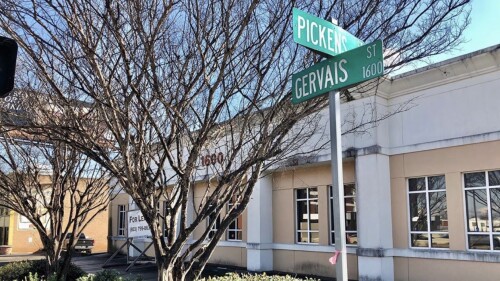Columbia’s growth in numbers. 💰
While we are seeing revival and growth in major commercial areas of Columbia – and rightfully celebrating that growth – we often hear people comparing Cola’s growth to the rest of the state’s. How does the Midlands measure up?
How much is each region producing? 💰
1️⃣ Greenville area | S.C.’s #1 largest economy with a GDP (gross domestic product – a.k.a. the total value of goods + services produced in the region) of ~$35.8 billion (BMW, Michelin, Nutra Manufacturing, Fluor)
2️⃣ Columbia area | S.C.’s #2 largest economy at ~$35.3 billion (State govt., Fort Jackson, UofSC + other colleges, healthcare, Nephron)
3️⃣ Charleston area | S.C.’s #3 largest economy at ~$34 billion (Boeing, Nucor, ports, aerospace, MUSC)
How much is each region’s economy growing? (from from 2011 to 2016) 🏙
1️⃣ Charleston area | 15.2%
2️⃣ Greenville area | 11.4%
3️⃣ Columbia area | 10.8%
How much is each region’s population growing? (from 2010 to 2016) 👨👩👧👦
1️⃣ Charleston area (Charleston County) | 13.2%
2️⃣ Greenville area (Greenville County) | 10.5%
3️⃣ Columbia area (Richland County, not counting Lexington County at 9.1%) | 6.5% (but Cola was ranked most livable out of all three regions in S.C. 😉)
None of this growth happens in a vacuum – as South Carolina, we all grow together. And we couldn’t grow without each other. Hence this interactive map of megaregions – where cities + towns are increasingly interconnected; not as divided by boundaries anymore.
Say hello to our new homeland name, Catalpa (Charlotte Columbia megaregion). 🖖

Image via discovery.dartmouth.edu/megaregions
Lest we forget, the combined populations of Richland + Lexington Counties is expected hit 1 million in 20 years, a 40% increase from today.
And to stop comparing regions and to start looking at the big picture, S.C.’s overall economy is booming – it’s projected to grow 3.8% in 2017 – compared to the projected national average of 2.1%.
A rising tide lifts all boats, amirite?











